Halfway is the town of Izcuchaca, with a historic bridge of Inca origins. From there, we leave the Inca Road completely and head south to Huancavelica, founded by Spaniards to mine mercury, which was needed to refine silver, such as in Potasi. In its day, Huancavelica was considered the "greatest jewel in the crown". There are still over a dozen colonial churches around town and they are the very picture of "former glory"; however the other 95% of the town, most Americans would describe as slum. According to Wikipedia, Huancavelica, as a department, is the poorest in the country, with a poverty rate of 84.4%.
None of this is apparent walking around town as there are restaurants all over the place, vendors selling treats, and numerous nonessential business; e.g. fashion stores, gift stores, and advertising campaigns....On the morning we were there, there was a parade of traditional dance by school kids commemorating the founding of their school. The sophistication of all the matching costumes could not have been more impressive, anywhere in the world. The real telltale was every single child had very fine shoes. Could Huancavelica be ascendant again?
Before we get to Huancavelica photos, here's a shot of the typical van we were taking around Huancayo. The conductor with head-out-window is standard.

The bus ride down the Mantaro valley. Some fields are ready for planting; in other the corn is knee-high.



Traffic is stopped for road work near the historic Izcuchaca bridge every other 2-hour period during weekday daylight hours. Good sales for the vendors. We bought a choclo (large kernel corn).


That's our Ticllas bus.

Finally after a 90-minute wait we cross the new bridge with a great view of the old bridge.


Our bus was not "%100 secure". ;-) Twice, the driver let snake oil salesman on board to give their pitch. Luckily I can turn down the volume on my hearing aids and SL tuned her headphones to a Spanish lesson. Haha.

Passengers get off before Huancavelica.

And it begins to rain.



The rain stopped before we reached the Huancavelica Terminal and after a 10 minute walk to city center, we found a hotel on the pedestrian-only street off the Plaza and soon were checking out the town. La Catedral.



It started raining again - it's cold when it rains at dusk at 13,000 ft - so we took refuge in a friendly chifa.

Dance practice.

Around 6:15 pm the schools let out and the pedestrian street was as lively as any passeggiata we've seen.

And the olive wagon (left) was out on the Plaza.
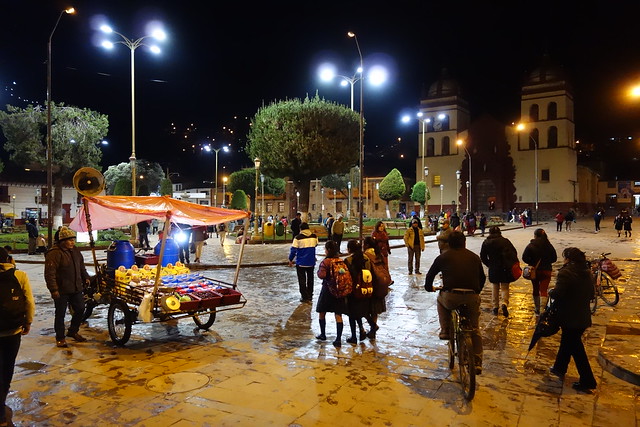
The next morning we set out to see the sites, mostly churches, around town but were delayed by a parade.




This older group is performing the marinera, one of the most popular folk dances in Peru.

Historic bridge.
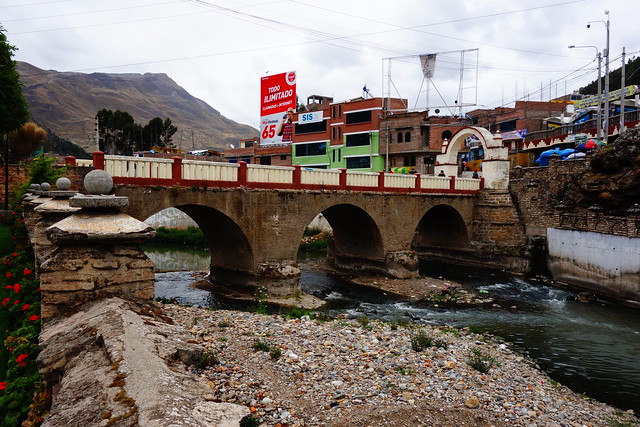
View to city center.

Bull ring, thermal baths, and railroad car.


Iglesia San Cristóbal (1770) has character.


There is a river walk; but the river needs some cleaning up for it to be attractive.

Iglesia de Santa Ana is the oldest church in Huancavelica (1576).


Children of the church, dressed in local costume, were waiting to give confession.

View to Plaza.

Huancavelica Station. at 3,680 meters above sea level, is one of the world's highest train stations. Service now suspended.

Another friendly non-veg resto makes us a tasty vegetarian lunch: noodles with pesto, potatoes in huancaino sauce.

And mazamorra morada (purple corn pudding) for dessert.

Iglesia de Santo Domingo is under renovation.
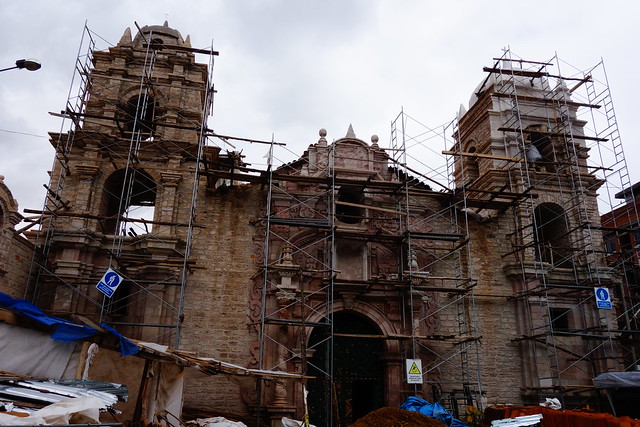
La Catedral in the sun.

The Plaza and Cathedral as seen from the 2nd floor of the City Library.

Puya Raimondii, the world's largest bromeliad.
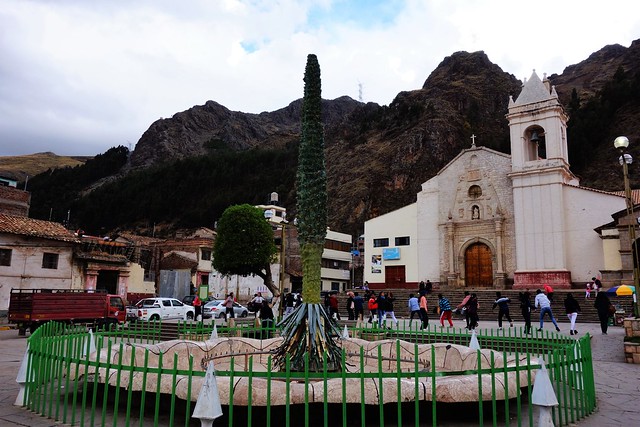
Iglesia de San Francisco.

And some final shots inside the Cathedral and it's astounding retablos. Is this San Tiago defeating the Moors?

Lots going on in this retablo. Check out the columns.


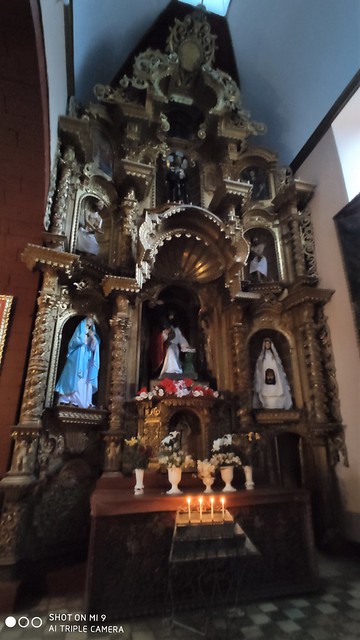
View from our hotel window (Hotel Corona) of the pedestrian street.


Some parade videos.


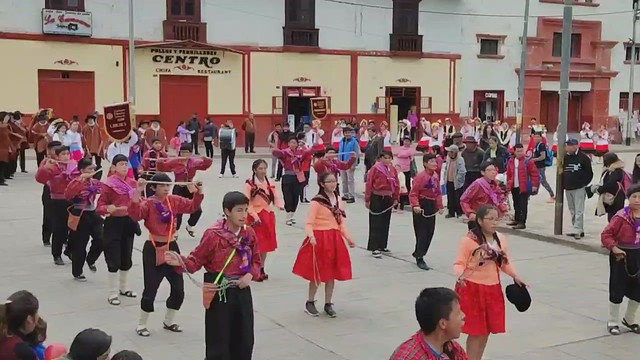



No comments:
Post a Comment